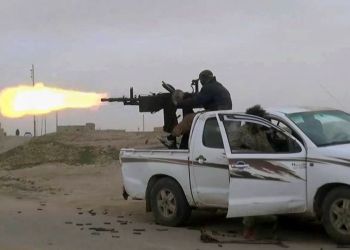This post is also available in:
![]() العربية
العربية
Six years have passed after a horrific massacre occurred in Deir Ezzor, killing many people. The massacre is named the al-Shaitat massacre that is one of the largest massacres in the history of the Syrian Revolution after the chemical massacre in the Eastern Ghouta.
Daesh committed the massacre against the al-Shaitat Tribe in the eastern Deir Ezzor countryside on August 9, 2014. Daesh committed the massacre after the tribe fought the group as it was controlling Deir Ezzor.
Activists and human rights organizations documenting the victims’ numbers say that Daesh killed 1,000 people of the al-Shaitat Tribe, mostly civilians, including women and children. Daesh used different ways to kill the people.
Daesh established mass graves in the towns of Abu Hamam, Granij, and al-Kishkiyah, in which the al-Shaitat Tribe people live, to bury bodies that filled streets and houses. Residents who returned to their houses continued to discover mass graves for a year.
By the massacre, Daesh wanted to deliver a message to those who opposed the group in Deir Ezzor which the group had entered by then and wanted to control its residents who rejected Daesh presence all over Deir Ezzor. Daesh committed the massacre in response to a civil uprising by the al-Shaitat Tribe after the group controlled the eastern Deir Ezzor countryside. Daesh violent actions in the area stirred the uprising.
Daesh lost members in the uprising as its presence quickly shrinked in areas , eastern Deir Ezzor, forcing it to send reinforcements from Iraq to suppress the uprising. Daesh initiated a process of mass retaliation against residents by killing them depending on the idendity and displacing them.
The al-Shaitat Tribe people live in the town of al-Kishkiyah, Abu Hamam, and Granij, eastern Deir Ezzor. The tribe people are estimated at 120,000 whom Daeh killed many of in 2014. Daesh expelled 100,000 of them to the steppe as mass punishment for their uprising against the group. A year after the massacre, Daesh allowed the expelled people to return to their houses gradually.
Fighters from the al-Shaitat Tribe played a key role in fighting and expelling Daesh from the area. After they left Deir Ezzor, the fighters were distributed to different front lines, most prominently in the northern Aleppo countryside. The fighters played a key role in defending the area against Daesh constant attacks.











